When development teams are planning the next six sprints – and no one is coming

Or rather, nobody is allowed to come. At least not to physically show up at a central conference space. The restrictions to contain the coronavirus are also firmly holding SupplyOn and its software partners in its grasp.
All digital
By the end of February, it became clear that a PI Planning (PI = Program Increment) like the last four in 2019 will no longer be possible. The fact that we are all coming together physically carries too great a risk of infection. And with the restrictions that are now in place, such a meeting would not be possible at all. It’s a good thing that we spent the last few weeks preparing for a PI planning with digital communication channels.
Hotel rooms, travel, conference center, everything cancelled. Plus, we had been thinking intensively about how to replace paper. In PI planning, we normally use sticky notes on boards because they are easy to change and present in the meeting room. We quickly decided to rely on the digital tools introduced at SupplyOn, Atlassian Jira and Confluence as well as Microsoft Skype and Teams. Everyone knows them and all security policies have been cleared.
All new
The PI Planning is approaching. As usual, two weeks in advance it is clear what will be implemented in the next three weeks. But then:
The day before the PI Planning – a big rush among the Product Managers, the Product Owners and the Teams as well as the Business Owners. Changes – customer priorities have shifted because of Corona – topics out, new priorities in, strategic decisions, trade-offs. A double test for the next two days in PI planning: significant changes in the focus areas and no meeting with over 100 participants in the conference center – just remote.
Final adjustments to Jira filters and Confluence templates. Running through the opening speech again with the Business Owners (where to click, who to click and when).Everything is prepared, the PI Planning can start the next day.
Kick-off for the first virtual PI Planning
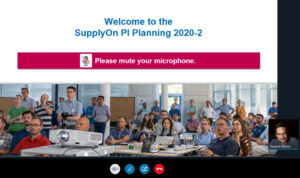
Now, PI Planning starts remotely. Everyone is in the home office – at SupplyOn and at the software partners.
Dr. Stefan Brandner, member of the SupplyOn Group’s Executive Board, commences the opening speech, going into the current challenges and measures at SupplyOn.
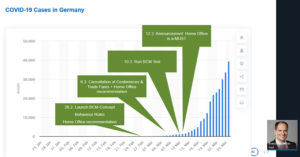
The Business Owners then follow to set the more detailed business context for the event. Brief questions in the chat are quickly clarified by the Product Managers.
Before the Team Breakouts start, Release Train Engineer (RTE) Martin Hautsch explains the agenda for the next two days, which most participants are familiar with from last year. He particularly addresses the changes related to the remote PI planning.
The Skype meeting of the opening speech remains open all day. It is intended for RTE announcements, such as the countdown to the start of new agenda items. It’s great to see how disciplined the chat is handled by the participants. Although it is open all day, it is not a distraction, but a helpful guide.
Remote teamwork
The teams are now retreating to the Team Breakouts to drill down further Features in User Stories and plan them into the six sprints of the upcoming PI.
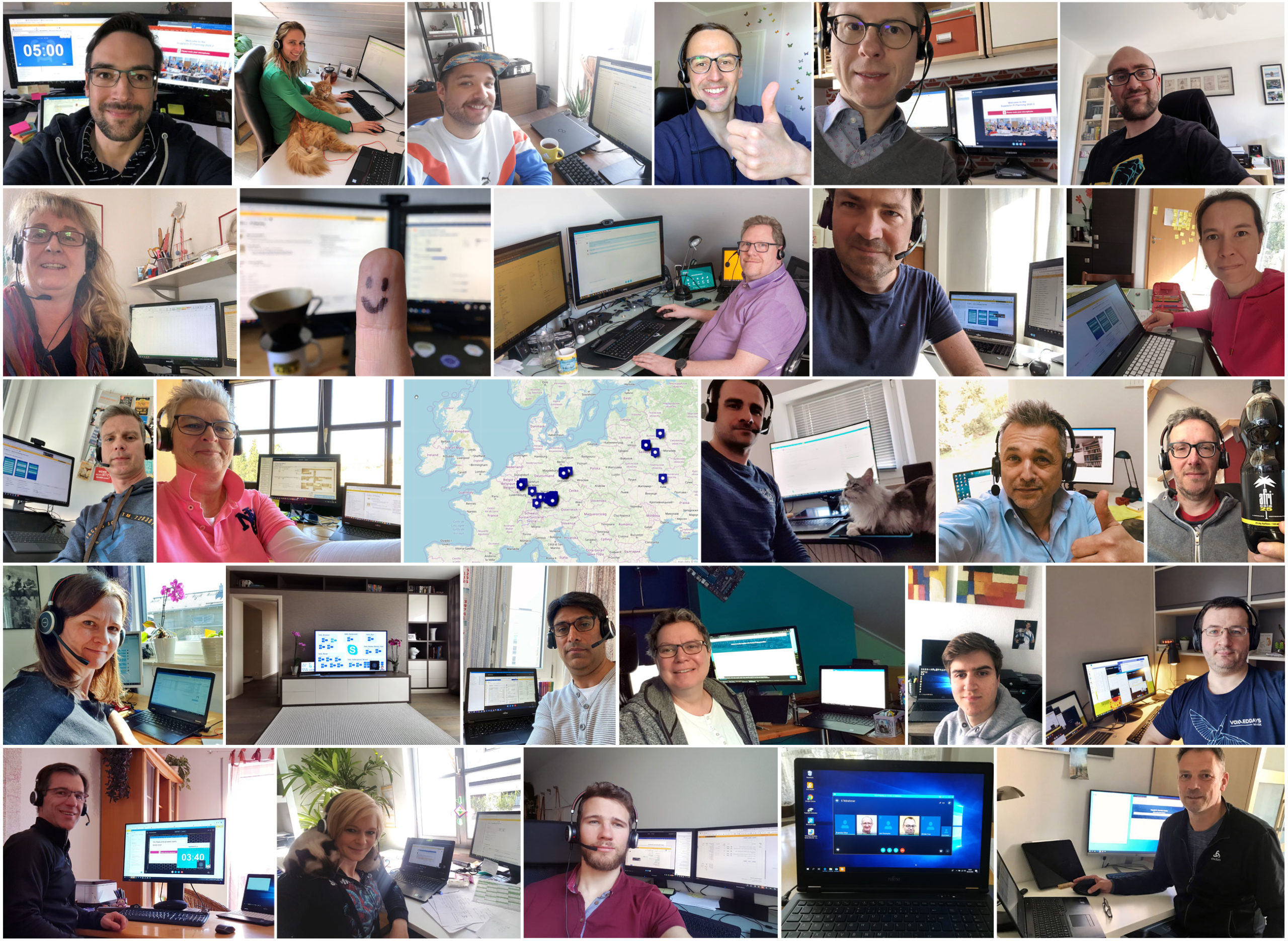
At 3:30 pm, the Business Owners and all other interested parties join in the Skype sessions of the teams, so that the teams can present their interim planning status in the Draft Plan Review. Risks are discussed and management decisions, which are to be made starting at 5 pm, are prepared.
Here it becomes apparent that, in contrast to the PI planning in the conference center, the time per team is tight, as fewer preliminary discussions were held. It is easier to talk to the Business Owner in the room in advance than to call him, especially if you don’t have a specific question in mind, but which usually comes up during the joint discussion.
The first day comes to an end. At 5 pm, management meets with the Product Managers to make decisions for the teams, based on which they can finalize their planning the next day.
Day 2
The second day continues on time at 9 am in the central Skype meeting with a presentation of the planning adjustments, i.e. yesterday’s management decisions, by the Product Managers. Next are Team Breakouts to finalize the plans.
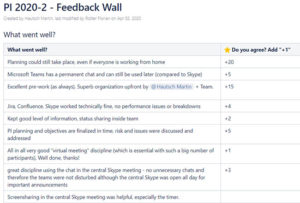
At 2:30 pm, the Final Plan Review starts, similar to the Draft Plan Review the day before. The Pl Planning concludes with the presentation of the Confidence Vote from the teams and discussion of the virtual Feedback Wall.
Safer with backup
By the way: We did not need the extra backup for the technical tools. It’ s good to have it. It’ s great not to need it either. We had organized external Hypercare support for Atlassian Jira and Confluence, the internal IT was on alert in case Skype, Jira or Confluence or the network failed. We also always had an alternative Skype or Teams Room organized with another provider for the team meetings.
Bottom line
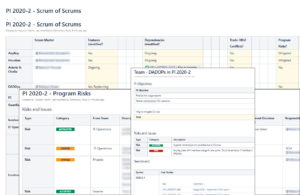
So how was it without a physical meeting? There were pros and cons. The practical thing is that everything is immediately stored electronically in Confluence and Jira. No illegible sticky notes on boards.
On the other hand, there were few spontaneous individual discussions, because you don’t run into each other this way.
We don’t know yet how the next PI Planning will look like. But we do know that we will do a lot of things the same way again, as it has proven to work. And we will improve some things based on the feedback we’ve received.
Now, we keep our fingers crossed that everybody stays healthy!



